Beauty, a concept as timeless as it is elusive, has captivated humanity throughout history. From the ancient Greek ideals of symmetry and proportion to the modern embrace of diversity, our perception of beauty has evolved alongside our understanding of the world.
This exploration delves into the multifaceted nature of beauty, examining its manifestations in art, nature, science, and identity.
We will journey through the ages, tracing the shifting sands of beauty standards and exploring the cultural, societal, and personal influences that shape our perceptions. From the idealized forms of classical sculptures to the raw beauty of natural landscapes, we will discover how beauty transcends time, place, and individual perspectives.
The Concept of Beauty
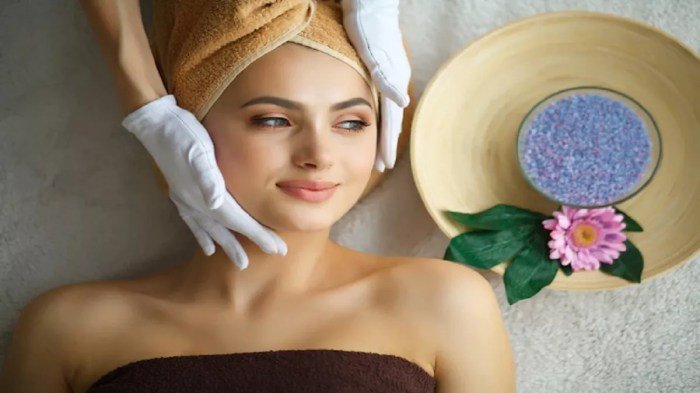
Beauty is a multifaceted concept that transcends cultural boundaries and historical periods. It encompasses a wide range of aesthetic qualities, subjective perceptions, and cultural interpretations.
Defining Beauty Across Cultures
The concept of beauty varies significantly across different cultures. Beauty standards are often influenced by a society’s values, beliefs, and historical context.
- In ancient Greece, beauty was associated with physical perfection, symmetry, and harmony. Ideal beauty was embodied in sculptures like the Venus de Milo, representing the epitome of feminine grace and elegance.
- In traditional African cultures, beauty often goes beyond physical attributes and encompasses qualities such as strength, wisdom, and resilience. Body modifications, such as scarification or lip plates, are often seen as markers of beauty and social status.
- In East Asian cultures, beauty standards often emphasize a pale complexion, delicate features, and a slim figure. For example, in Japan, the concept of “kawaii” (cute) is highly valued, and women often strive for a youthful and innocent appearance.
The Evolution of Beauty Standards
Beauty standards have evolved throughout history, reflecting changing societal values and ideals.
- In the Renaissance period, beauty was associated with idealized representations of the human form, as seen in the paintings of Leonardo da Vinci and Michelangelo. The Renaissance ideal of beauty emphasized classical proportions and a harmonious balance between physical and intellectual qualities.
- In the Victorian era, beauty standards shifted towards a more delicate and feminine aesthetic. Women were expected to have a pale complexion, a slender figure, and a demure demeanor. Corsets were widely used to achieve the desired hourglass shape.
- In the 20th century, beauty standards became more diverse and influenced by the rise of mass media and popular culture. The rise of Hollywood and fashion magazines contributed to the creation of new beauty ideals, often promoting a slim and toned physique.
The Influence of Societal Norms and Media
Societal norms and media play a significant role in shaping perceptions of beauty.
- Advertising, fashion magazines, and social media often present unrealistic and narrow beauty standards, promoting a sense of inadequacy and pressure to conform. These media platforms often use airbrushing and other techniques to create images of idealized beauty, which can contribute to a distorted view of reality.
- The constant exposure to these idealized images can lead to body image issues and a sense of dissatisfaction with one’s own appearance. This can have a negative impact on self-esteem and mental health.
Beauty in Art and Literature
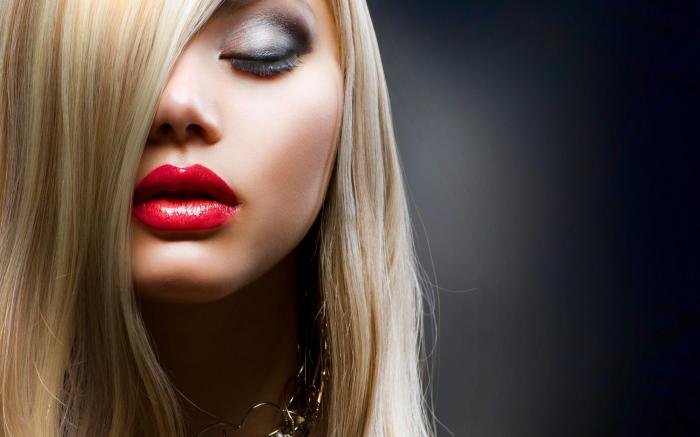
Beauty, as a multifaceted concept, finds expression in various art forms, each contributing to our understanding of its diverse manifestations. From the vibrant hues of paintings to the intricate details of sculptures, the harmonious melodies of music to the evocative words of literature, beauty transcends boundaries and speaks to the human soul.
Beauty in Painting
Painting, as a visual art form, has long been used to capture the essence of beauty. Artists throughout history have employed different techniques and styles to depict beauty in its myriad forms.
- Classical Beauty:Artists during the Renaissance and Baroque periods often portrayed idealized beauty, characterized by symmetry, proportion, and grace. Examples include Leonardo da Vinci’s “Mona Lisa” and Michelangelo’s “David.” These works embodied the classical ideals of beauty, emphasizing perfection and harmony.
- Romantic Beauty:Romanticism, a movement that emerged in the late 18th century, celebrated the beauty of nature and the power of emotion. Artists like Caspar David Friedrich and J.M.W. Turner captured the sublime beauty of landscapes and the awe-inspiring power of nature.
Their works often featured dramatic skies, rugged mountains, and stormy seas, reflecting the Romantic fascination with the wild and untamed.
- Impressionist Beauty:Impressionism, a movement that originated in France in the 19th century, emphasized the fleeting beauty of light and color. Artists like Claude Monet and Pierre-Auguste Renoir used short, broken brushstrokes to capture the ephemeral nature of light and its effects on the world around them.
Their works often depict scenes of everyday life, such as gardens, cafes, and landscapes, capturing the beauty of the ordinary.
- Abstract Beauty:Abstract art, which emerged in the early 20th century, explored the beauty of form and color independent of any representational subject matter. Artists like Wassily Kandinsky and Piet Mondrian sought to express beauty through the interplay of shapes, colors, and textures.
Their works challenged conventional notions of beauty by focusing on the purely aesthetic qualities of art.
Beauty in Nature

Nature, in all its diverse forms, holds an unparalleled capacity to inspire awe and wonder. From the majestic peaks of mountains to the delicate petals of a flower, the beauty of the natural world has captivated human imagination for centuries.
This section explores the multifaceted beauty of nature, delving into its scientific and philosophical perspectives, and examining its profound influence on artistic expression.
The Beauty of Landscapes
The beauty of natural landscapes is often attributed to their grandeur, complexity, and diversity. From the vast expanse of oceans and deserts to the intricate patterns of forests and mountains, each landscape offers a unique aesthetic experience. The interplay of light and shadow, the textures of rock and soil, and the vibrant colors of vegetation all contribute to the visual appeal of nature.
The Beauty of Flora and Fauna
The beauty of flora and fauna lies in their intricate details and the delicate balance of form and function. Flowers, with their vibrant colors, delicate petals, and intricate patterns, have long been symbols of beauty and grace. Similarly, the elegance of birds in flight, the grace of animals in motion, and the intricate patterns of insects all contribute to the aesthetic richness of the natural world.
Scientific Perspectives on the Beauty of Nature
Scientists have long been fascinated by the beauty of nature, seeking to understand the underlying principles that govern its aesthetic appeal. Studies in evolutionary biology suggest that humans have developed a preference for certain natural features, such as symmetry, balance, and complexity, as these qualities may indicate health, vitality, and reproductive fitness.
Philosophical Perspectives on the Beauty of Nature
Philosophers have also explored the concept of beauty in nature, offering diverse perspectives on its meaning and significance. Some philosophers, such as Immanuel Kant, argue that beauty is a subjective experience, shaped by individual perception and cultural context. Others, like John Ruskin, emphasize the importance of nature as a source of moral and spiritual inspiration.
Nature as Inspiration for Artistic Expression
Throughout history, artists have drawn inspiration from the beauty of nature, expressing their appreciation through various forms of art. Painters, such as Claude Monet and Vincent van Gogh, captured the fleeting beauty of landscapes and flowers in their works. Poets, such as William Wordsworth and John Keats, used language to evoke the sensory experiences of nature.
Musicians, like Vivaldi and Beethoven, drew inspiration from the sounds of birdsong and the rustling of leaves.
Beauty in Science and Technology
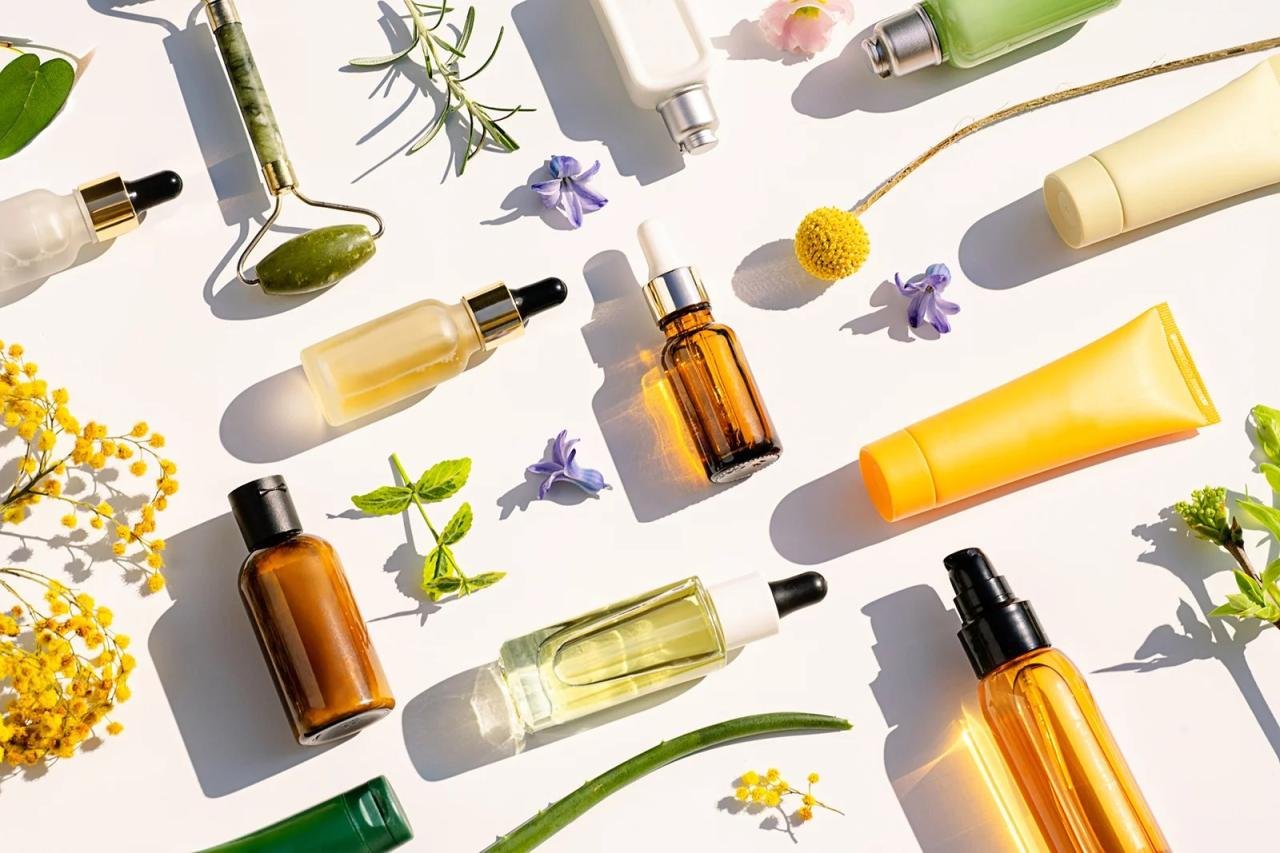
Science and technology have revolutionized our understanding of beauty, influencing not only how we perceive it but also how we strive to achieve it. From the realm of cosmetic surgery to the development of beauty products, science plays a crucial role in enhancing our physical appearance.
However, these advancements raise ethical considerations and impact our definition and perception of beauty.
The Application of Scientific Principles in Enhancing Beauty
The application of scientific principles in enhancing beauty is evident in various fields, particularly in cosmetic surgery and beauty products. Cosmetic surgery utilizes surgical techniques to reshape and enhance specific features, such as the nose, breasts, or eyelids. The procedures often involve altering bone structure, removing excess fat, or tightening skin, aiming to achieve a more aesthetically pleasing appearance.
Cosmetic surgery is a branch of surgery that focuses on improving physical appearance. It encompasses a wide range of procedures, including rhinoplasty (nose reshaping), breast augmentation, liposuction, and eyelid surgery.
Beauty products, on the other hand, rely on scientific knowledge to develop formulations that address specific skin concerns, such as wrinkles, blemishes, or uneven skin tone.
Beauty products often contain ingredients derived from natural sources or synthesized in laboratories. These ingredients can include antioxidants, moisturizers, sunscreens, and exfoliants, each designed to address specific skin concerns.
Ethical Considerations Surrounding Technological Advancements in Beauty
The increasing use of technology in enhancing beauty raises ethical concerns. One primary concern is the potential for societal pressure and unrealistic beauty standards. The proliferation of digitally altered images in media and social media can create an unattainable ideal of beauty, leading to body dissatisfaction and mental health issues.
The pressure to conform to unrealistic beauty standards can have negative psychological consequences, including low self-esteem, body dysmorphic disorder, and eating disorders.
Another ethical concern is the potential for discrimination and inequality. Access to advanced beauty technologies, such as cosmetic surgery and high-end beauty products, is often limited by socioeconomic factors. This can perpetuate existing inequalities and create a divide between those who can afford to enhance their appearance and those who cannot.
The cost of cosmetic surgery and premium beauty products can be prohibitive for many individuals, particularly those from lower socioeconomic backgrounds. This can exacerbate existing inequalities and create a disparity in access to beauty enhancement technologies.
The Impact of Technology on the Definition and Perception of Beauty
Technology has significantly impacted our definition and perception of beauty. The rise of social media platforms and online filters has blurred the lines between reality and digital enhancements. This can lead to a distorted view of beauty, where people are constantly bombarded with images that have been manipulated to achieve an idealized appearance.
The widespread use of filters and photo editing apps can create a distorted perception of beauty, leading individuals to believe that unrealistic standards are achievable.
Moreover, technology has introduced new concepts of beauty, such as “digital beauty” and “augmented reality beauty.” These concepts challenge traditional notions of beauty and explore the potential for technology to create entirely new forms of aesthetic expression.
Digital beauty refers to the use of technology to enhance or alter one’s appearance digitally, often through the use of filters, makeup apps, and virtual reality experiences. Augmented reality beauty involves overlaying digital elements onto the real world, such as virtual makeup or virtual accessories.
Beauty and Identity

The concept of beauty is deeply intertwined with our sense of self and how we perceive ourselves in the world. Beauty standards, often shaped by societal norms and cultural influences, can significantly impact individual identity and self-esteem. This section explores the complex relationship between beauty, identity, and the social pressures that surround it.
Beauty and Self-Esteem
Beauty standards play a significant role in shaping individual self-esteem. The media, advertising, and social platforms often present idealized images of beauty, which can lead individuals to compare themselves and feel inadequate. This comparison can negatively impact self-worth, leading to feelings of insecurity, anxiety, and even depression.
Studies have shown that individuals who perceive themselves as meeting societal beauty standards tend to have higher self-esteem, while those who do not often experience lower self-esteem and feelings of inadequacy.
Beauty and Social Status
Historically, beauty has been associated with social status, power, and privilege. In many cultures, physical attractiveness has been seen as a sign of wealth, health, and desirability. This association has often led to a hierarchy where those considered beautiful are given preferential treatment and opportunities, while those who do not meet these standards may face discrimination and social exclusion.
“Beauty is power; a smile is its sword.”
John Ray
The Impact of Beauty Standards on Mental Health
The relentless pursuit of beauty, fueled by societal pressure and the media, can have detrimental effects on mental health. Unrealistic beauty standards can lead to body image issues, eating disorders, and other mental health challenges. Social media, in particular, has amplified the pressure to conform to these standards, with users constantly bombarded with filtered and edited images of “perfect” bodies and faces.
This constant exposure can contribute to feelings of inadequacy and dissatisfaction with one’s own appearance, leading to negative self-perception and mental health issues.
Beauty and Diversity

Beauty is not confined to a single standard. It exists in a myriad of forms, reflecting the rich tapestry of human diversity. Celebrating the beauty found in different cultures, ethnicities, and body types is crucial to fostering inclusivity and challenging narrow beauty ideals.
The Importance of Promoting Inclusivity
Promoting inclusivity in beauty standards is essential for several reasons. It challenges the harmful notion that only certain types of beauty are valuable, leading to a more equitable and accepting society. It empowers individuals to embrace their unique features and feel confident in their own skin.
- Increased self-esteem:When people see themselves represented in media and advertising, they are more likely to feel confident and comfortable in their own skin. This can lead to increased self-esteem and a greater sense of belonging.
- Reduced prejudice and discrimination:Promoting inclusivity in beauty standards helps to challenge harmful stereotypes and prejudices. It encourages people to see beauty in all its forms, regardless of race, ethnicity, or body type.
- Greater acceptance and understanding:When people are exposed to a wider range of beauty standards, they are more likely to develop a greater understanding and acceptance of diversity. This can lead to a more inclusive and tolerant society.
The Role of Media and Advertising
Media and advertising play a significant role in shaping perceptions of beauty. They often perpetuate narrow beauty ideals, which can have a negative impact on individuals’ self-esteem and body image. It is crucial to challenge these representations and promote a more diverse and inclusive vision of beauty.
- Representation matters:The media and advertising industries should strive to represent a wider range of body types, ethnicities, and ages. This will help to normalize diversity and challenge the notion that only certain types of beauty are desirable.
- Positive messaging:Media and advertising campaigns should promote positive body image and self-acceptance. They should avoid using harmful stereotypes and unrealistic beauty standards.
- Challenging the status quo:Consumers can also play a role in challenging narrow beauty ideals by supporting brands and media outlets that promote inclusivity and diversity. They can also use their voices to call out harmful representations and advocate for change.
The Future of Beauty
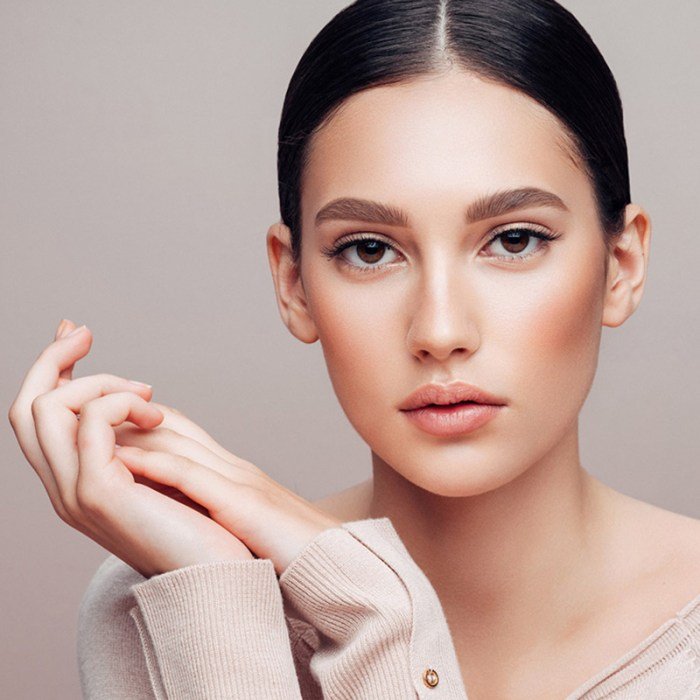
The concept of beauty is constantly evolving, shaped by cultural shifts, technological advancements, and individual interpretations. As we venture into the future, we can expect a dynamic landscape where beauty standards will be redefined, challenged, and ultimately, embraced with a greater emphasis on inclusivity, individuality, and a deeper understanding of self-acceptance.
The Impact of Emerging Technologies on Beauty Standards
Emerging technologies will play a significant role in shaping beauty standards. The advancements in artificial intelligence (AI), virtual reality (VR), and augmented reality (AR) will provide individuals with unprecedented control over their appearance. AI-powered beauty apps and filters will offer personalized recommendations and enhancements, blurring the lines between reality and digital representations.
- VR and AR technologies will allow individuals to experiment with different looks and styles in virtual environments, providing a platform for self-expression and exploration.
- AI-driven beauty tools will analyze facial features and skin types to suggest customized beauty routines, products, and treatments.
- The rise of virtual influencers and digital avatars will challenge traditional notions of beauty, introducing new standards and aesthetics.
While these technologies offer exciting possibilities for self-expression and empowerment, they also raise concerns about the potential for unrealistic beauty standards and the commodification of beauty. It is crucial to approach these advancements with a critical lens, ensuring that they promote inclusivity and foster a healthy relationship with one’s appearance.
The Role of Individual Agency and Self-Acceptance
In the future of beauty, individual agency and self-acceptance will be paramount. Individuals will increasingly prioritize their own definitions of beauty, rejecting societal pressures and embracing their unique features. This shift will be fueled by a growing awareness of diversity and the recognition that beauty comes in all shapes, sizes, and forms.
“Beauty is not about conforming to a standard, it’s about embracing your individuality and celebrating what makes you unique.”
- The rise of body positivity movements and social media platforms dedicated to promoting self-love will encourage individuals to challenge traditional beauty norms and embrace their authentic selves.
- Individuals will actively participate in shaping the beauty industry, demanding more inclusive representation and products that cater to a wider range of skin tones, body types, and ages.
- The focus will shift from achieving an idealized standard of beauty to celebrating diversity and embracing individual beauty as a source of strength and confidence.
Concluding Remarks
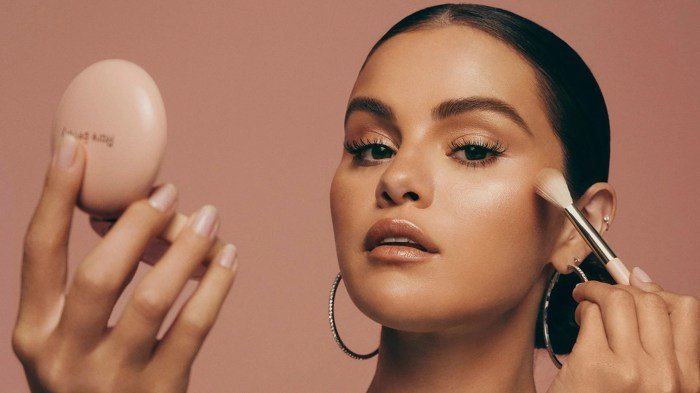
As we conclude our journey into the realm of beauty, we are left with a profound appreciation for its multifaceted nature. Beauty is not merely a superficial quality but a complex tapestry woven from art, nature, science, and human experience.
In embracing the diverse expressions of beauty, we celebrate the richness and complexity of our world, acknowledging the power of aesthetics to inspire, connect, and empower.
Popular Questions
What are some common beauty standards across cultures?
Beauty standards vary widely across cultures, but some common themes include symmetry, clear skin, healthy hair, and a pleasing physique. These standards can be influenced by factors such as climate, ethnicity, and societal values.
How does the media influence our perceptions of beauty?
The media plays a significant role in shaping our perceptions of beauty by presenting idealized and often unattainable standards. This can lead to body image issues and unrealistic expectations for individuals.
What are some ethical considerations surrounding beauty enhancements?
Ethical considerations surrounding beauty enhancements include issues of consent, safety, accessibility, and the potential for perpetuating unrealistic beauty standards. It is important to approach these procedures with caution and a critical perspective.